Impact of Magnetization on the Evaluation of Reinforced Concrete Structures Using DC Magnetic Methods
Abstract
:1. Introduction
1.1. Nondestructive Methods of Testing Concrete Structures
1.2. Novelty and Significance of the Research
1.3. The Article Outline
2. Materials and Methods
2.1. Measuring Systems and Samples
2.1.1. Test Samples
2.1.2. Systems for Active Magnetic Inspection
2.1.3. Measuring System with Magneto-Optical Sensor
- Faraday: for applications without external excitation;
- Bias: for work in the environment of an external magnetic field. In this mode, performance is weaker, but other types of sensors would lose their performance entirely. This mode is used mainly with magnetically very soft materials, like inks.
2.1.4. Measuring System with a Magnetoresistive Sensor
2.2. Methods of Processing the Results
2.2.1. Measurement Results Processing in the System with MO Sensor
2.2.2. Measurement Results Processing in the System with MR Sensor
3. Results
3.1. Experiments with the MO-Transducer
3.2. Influence of Rebars Magnetization Method on Magnetic Field Distribution
4. Discussion
5. Conclusions
Author Contributions
Funding
Institutional Review Board Statement
Informed Consent Statement
Data Availability Statement
Conflicts of Interest
References
- Wegen, G.; Polder, R.B.; Breugel, K. Guideline for service life design of structural concrete—A performance-based approach with regard to chloride induced corrosion. Heron 2012, 57, 153–168. [Google Scholar]
- Neville, A.M.; Neville, A.M. Properties of Concrete; Pearson Education Limited: London, UK, 2011; ISBN 9780273755807. [Google Scholar]
- Frankowski, P.K.; Chady, T.; Zieliński, A. Magnetic force induced vibration evaluation (M5) method for frequency analysis of rebar-debonding in reinforced concrete. Measurement 2021, 182, 109655. [Google Scholar] [CrossRef]
- Mayakuntla, P.K.; Ghosh, D.; Ganguli, A. Nondestructive evaluation of rebar corrosion in concrete structures using ultrasonics and laser-based sensing. Nondestruct. Test. Eval. 2021, 1–18. [Google Scholar] [CrossRef]
- Ghosh, D.; Kumar, R.; Ganguli, A.; Mukherjee, A. Nondestructive Evaluation of Rebar Corrosion–Induced Damage in Concrete through Ultrasonic Imaging. J. Mater. Civ. Eng. 2020, 32, 04020294. [Google Scholar] [CrossRef]
- Miwa, T. Non-Destructive and Quantitative Evaluation of Rebar Corrosion by a Vibro-Doppler Radar Method. Sensors 2021, 21, 2546. [Google Scholar] [CrossRef] [PubMed]
- Vibration-Based Nondestructive Damage Detection for Concrete Plates. ACI Struct. J. 2021, 118, 118. [CrossRef]
- Szymanik, B.; Frankowski, P.K.; Chady, T.; Chelliah, C.R.A.J. Detection and Inspection of Steel Bars in Reinforced Concrete Structures Using Active Infrared Thermography with Microwave Excitation and Eddy Current Sensors. Sensors 2016, 16, 234. [Google Scholar] [CrossRef] [Green Version]
- Chady, T.; Frankowski, P.K. Electromagnetic Evaluation of Reinforced Concrete Structure. AIP Conf. Proc. 2013, 1511, 1355–1362. [Google Scholar] [CrossRef]
- Frankowski, P.K.; Chady, T.; Sikora, R. Knowledge extraction algorithms dedicated for identification of steel bars in reinforced concrete structures. AIP Conf. Proc. 2014, 1581, 822. [Google Scholar] [CrossRef]
- Frankowski, P.K. Corrosion detection and measurement using eddy current method. In Proceedings of the 2018 International Interdisciplinary PhD Workshop (IIPhDW), Swinoujście, Poland, 9–12 May 2018. [Google Scholar] [CrossRef]
- Mosharafi, M.; Mahbaz, S.; Dusseault, M.; Vanheeghe, P. Magnetic detection of corroded steel rebar: Reality and simulations. NDT E Int. 2020, 110, 102225. [Google Scholar] [CrossRef]
- Frankowski, P.K.; Sikora, R.; Chady, T. Identification of rebars in a reinforced mesh using eddy current method. AIP Conf. Proc. 2016, 1706, 090008. [Google Scholar] [CrossRef] [Green Version]
- McCann, D.; Forde, M. Review of NDT methods in the assessment of concrete and masonry structures. NDT E Int. 2001, 34, 71–84. [Google Scholar] [CrossRef]
- Solla, M.; Lagüela, S.; Fernández, N.; Garrido, I. Assessing Rebar Corrosion through the Combination of Nondestructive GPR and IRT Methodologies. Remote. Sens. 2019, 11, 1705. [Google Scholar] [CrossRef] [Green Version]
- Tešić, K.; Baričević, A.; Serdar, M. Non-Destructive Corrosion Inspection of Reinforced Concrete Using Ground-Penetrating Radar: A Review. Materials 2021, 14, 975. [Google Scholar] [CrossRef]
- Diederich, H.; Vogel, T. Evaluation of Reinforcing Bars Using the Magnetic Flux Leakage Method. J. Infrastruct. Syst. 2017, 23. [Google Scholar] [CrossRef]
- Diederich, H.; Vogel, T. Break Detection in Reinforcing Bars Using the Magnetic Flux Leakage Method. In Proceedings of the International Symposium Non-Destructive Testing in Civil Engineering (NDT-CE), Berlin, Germany, 15–17 September 2015. [Google Scholar]
- Sadeghnejad, A.; Valikhani, A.; Chunn, B.; Lau, K.; Azizinamini, A. Magnetic Flux Leakage Method for Detecting Corrosion in Post Tensioned Segmental Concrete Bridges in Presence of Secondary Reinforcement. In Proceedings of the Transportation Research Board 96th Annual Meeting, Washington DC, USA, 8–12 January 2017. [Google Scholar]
- Zhang, H.; Liao, L.; Zhao, R.; Zhou, J.; Yang, M.; Zhao, Y. A new judging criterion for corrosion testing of reinforced concrete based on self-magnetic flux leakage. Int. J. Appl. Electromagn. Mech. 2017, 54, 123–130. [Google Scholar] [CrossRef]
- Shams, S.; Ghorbanpoor, A.; Lin, S.; Azari, H. Nondestructive Testing of Steel Corrosion in Prestressed Concrete Structures using the Magnetic Flux Leakage System. Transp. Res. Rec. J. Transp. Res. Board 2018, 2672, 132–144. [Google Scholar] [CrossRef]
- Sun, Y.; Liu, S.; Deng, Z.; Tang, R.; Ma, W.; Tian, X.; Kang, Y.; He, L. Magnetic flux leakage structural health monitoring of concrete rebar using an open electromagnetic excitation technique. Struct. Health Monit. 2018, 17, 121–134. [Google Scholar] [CrossRef]
- Gobov, Y.L.; Mikhailov, A.V.; Smorodinskii, Y.G. Magnetic Method for Nondestructive Testing of Rebar in Concrete. Russ. J. Nondestruct. Test. 2018, 54, 871–876. [Google Scholar] [CrossRef]
- Tran, H.Q. Passive and active infrared thermography techniques in nondestructive evaluation for concrete bridge. AIP Conf. Proc. 2021, 2420, 050008. [Google Scholar] [CrossRef]
- Fermon, C. Introduction on Magnetic Sensing and Spin Electronics. Nanomagn. Appl. Perspect. 2017, 1–18. [Google Scholar] [CrossRef]
- Koschny, M.; Lindner, M. Magneto-optical sensors accurately analyze magnetic field distribution of magnetic materials. Adv. Mater. Processes 2012, 170, 13–17. [Google Scholar]
- D’Silva, G.J.; Feigenbaum, H.P.; Ciocanel, C. Visualization of Magnetic Domains and Magnetization Vectors in Magnetic Shape Memory Alloys Under Magneto-Mechanical Loading. Shape Mem. Superelast. 2020, 6, 67–88. [Google Scholar] [CrossRef]
- Matesy. Available online: https://matesy.de/en/products/materials/mo-sensors-magnetooptics (accessed on 13 November 2021).
- Yang, S.; Zhang, J. Current Progress of Magnetoresistance Sensors. Chemosensors 2021, 9, 211. [Google Scholar] [CrossRef]
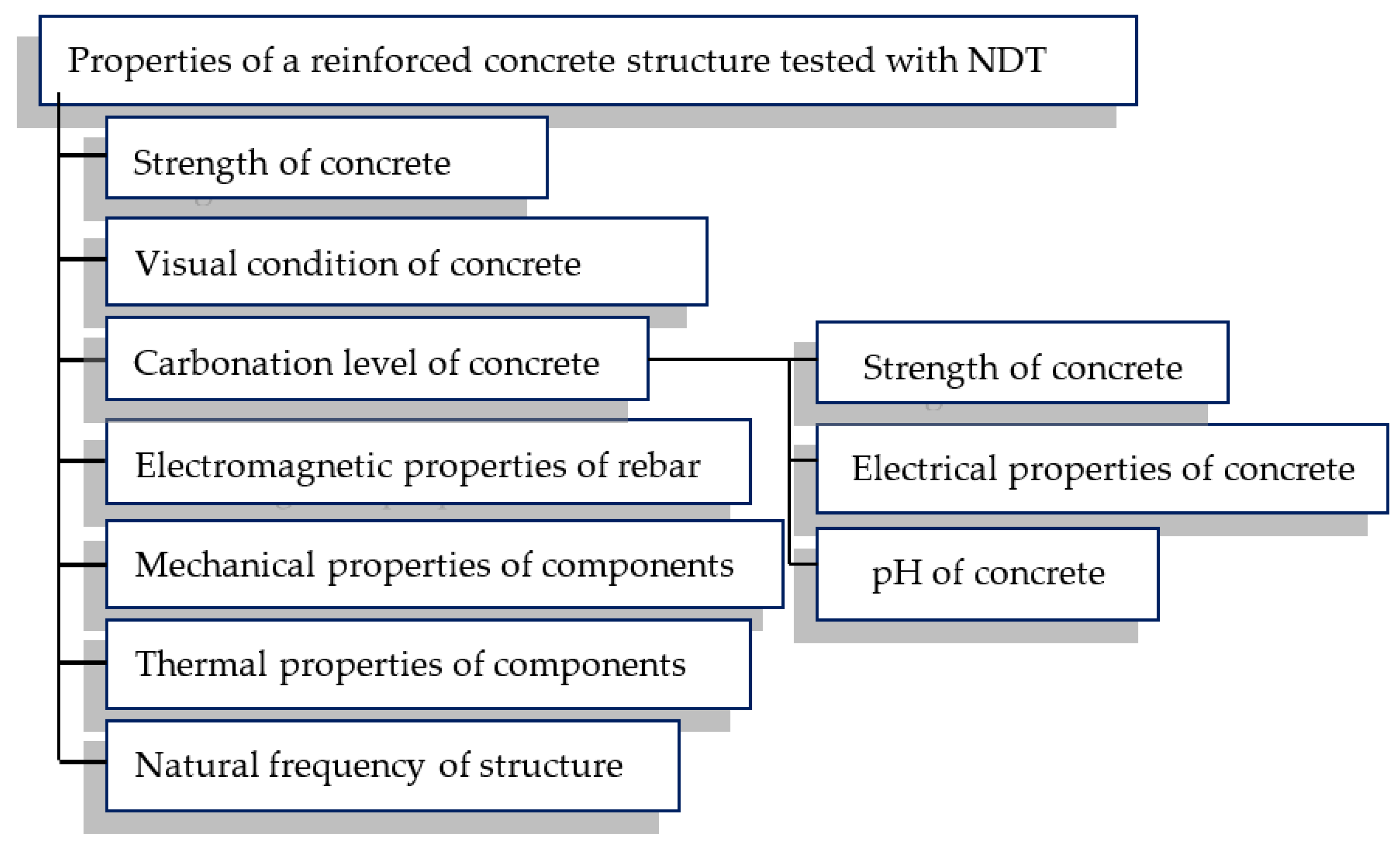

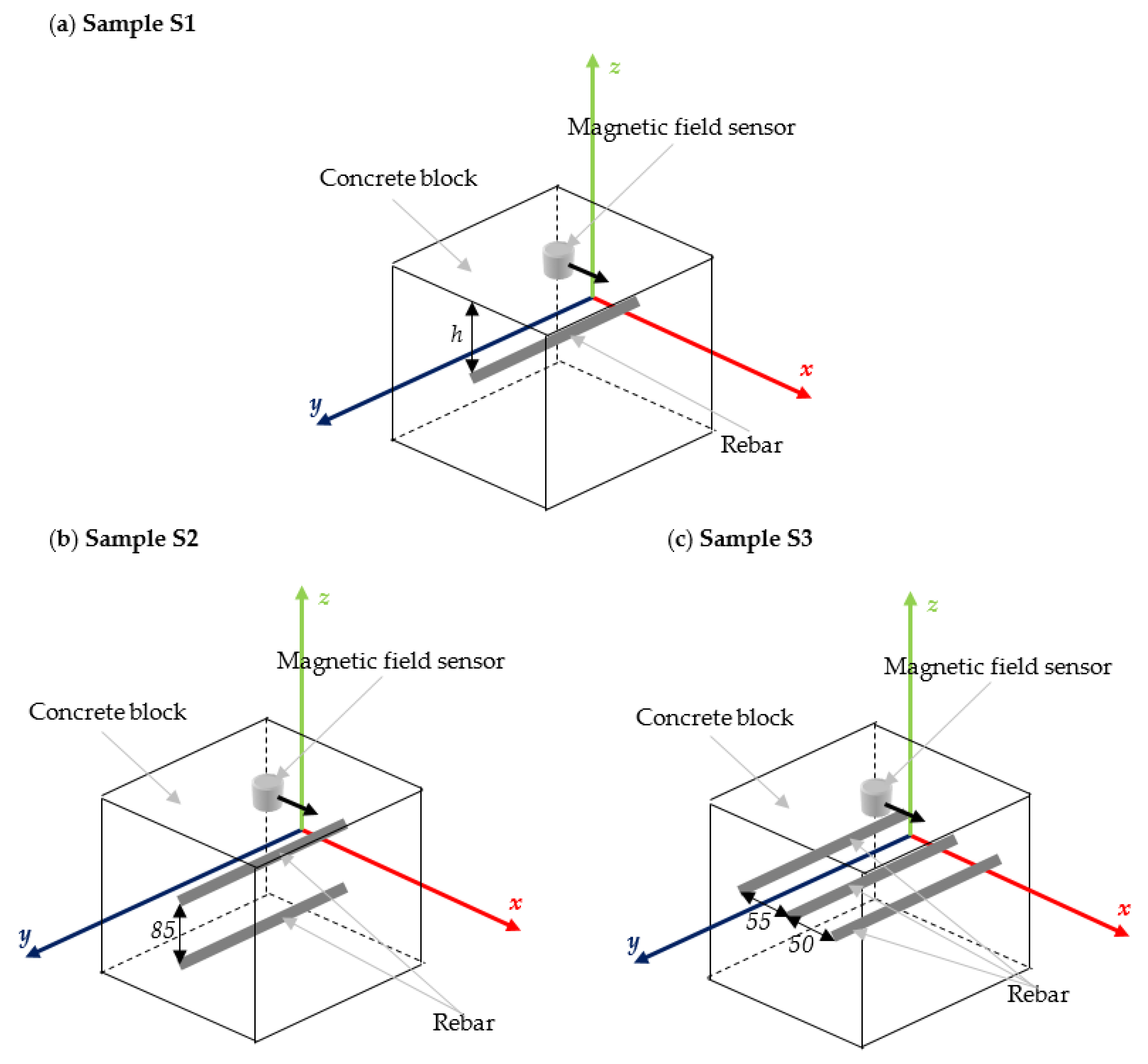


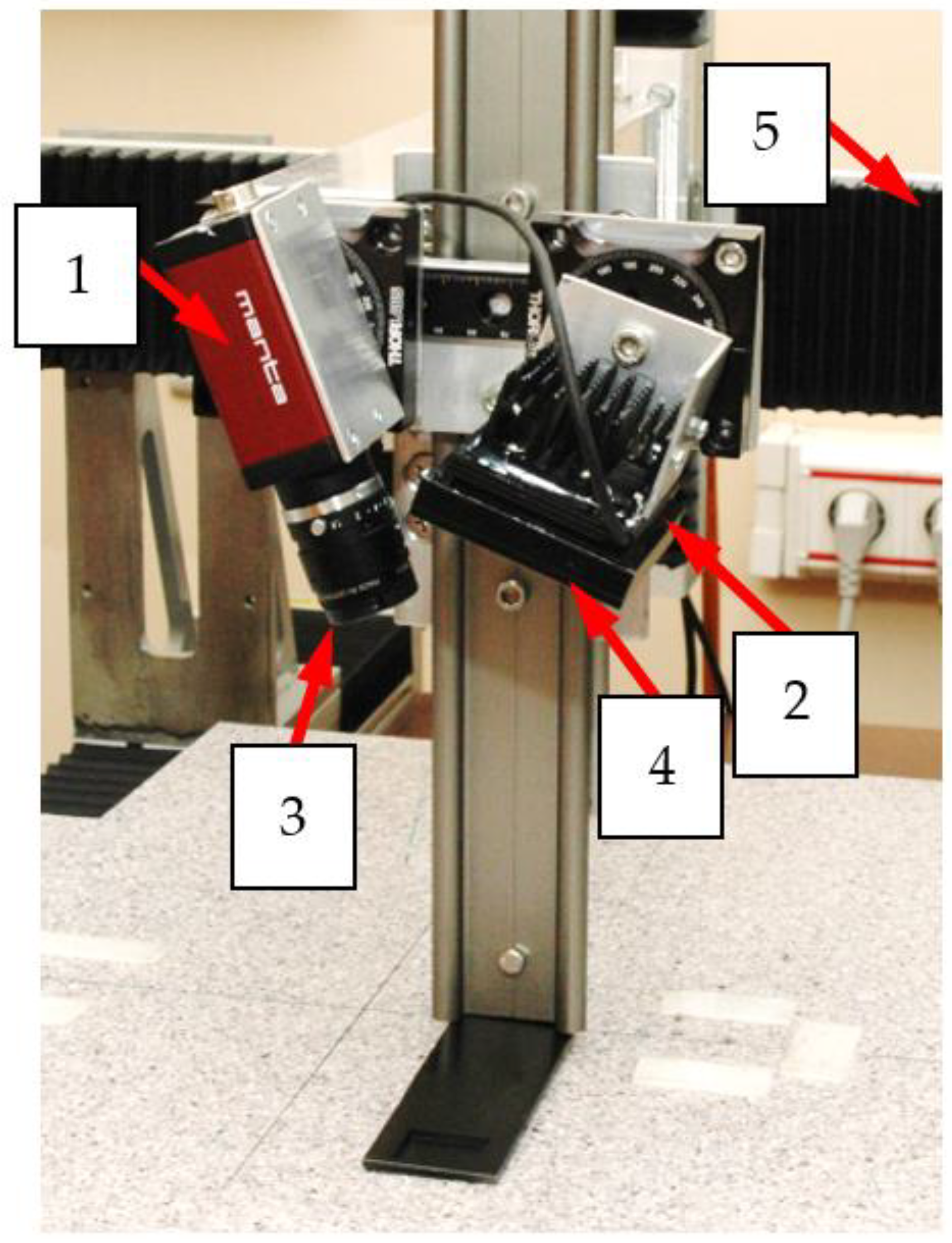

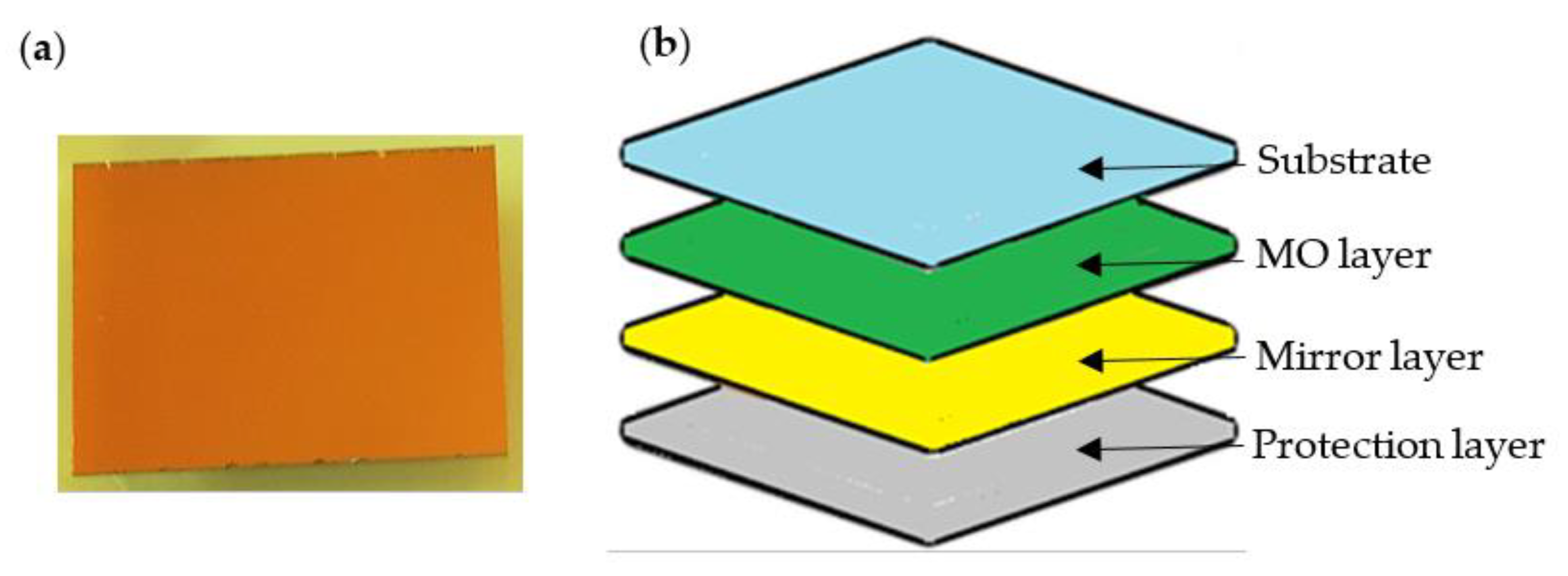
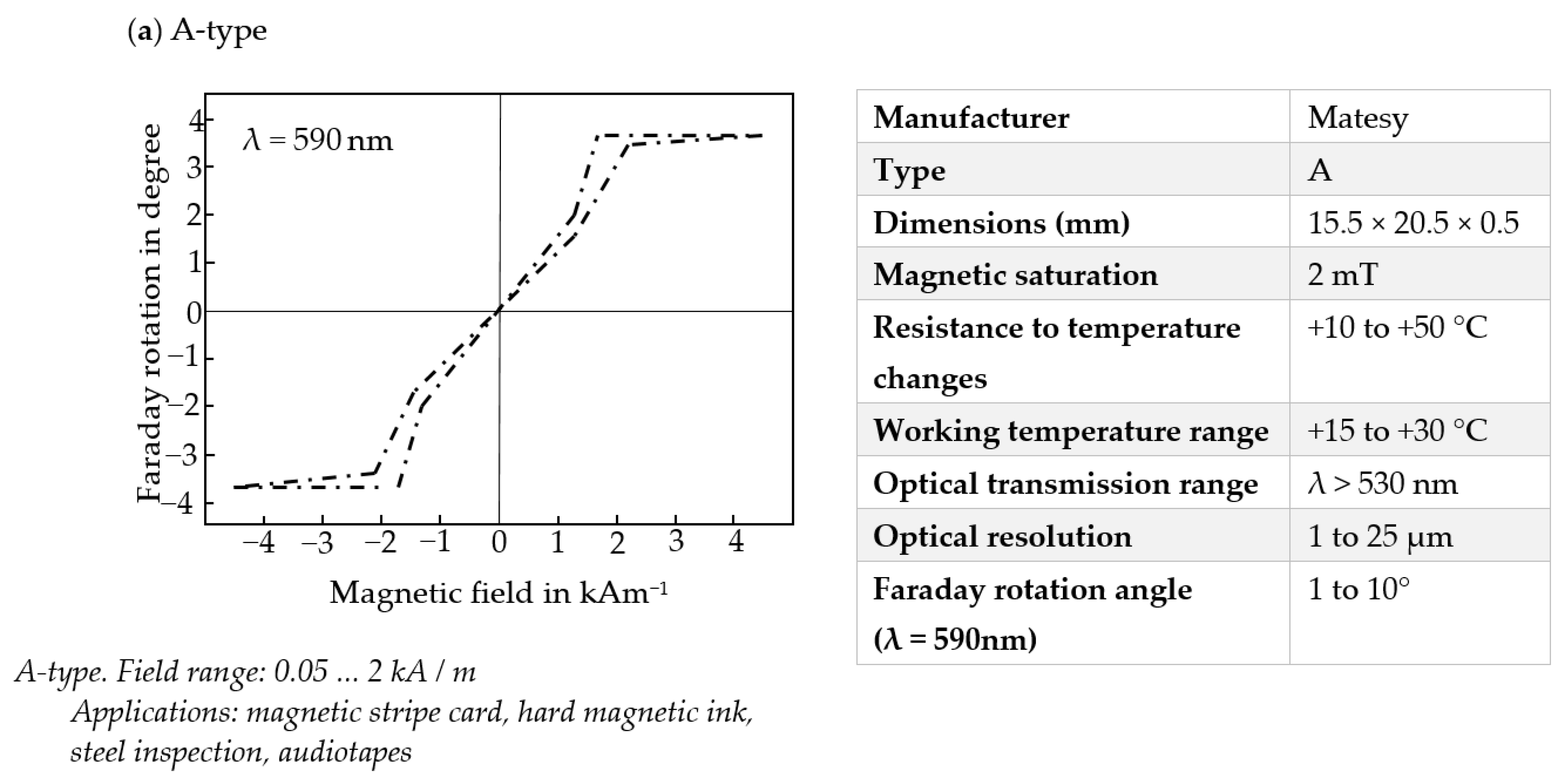
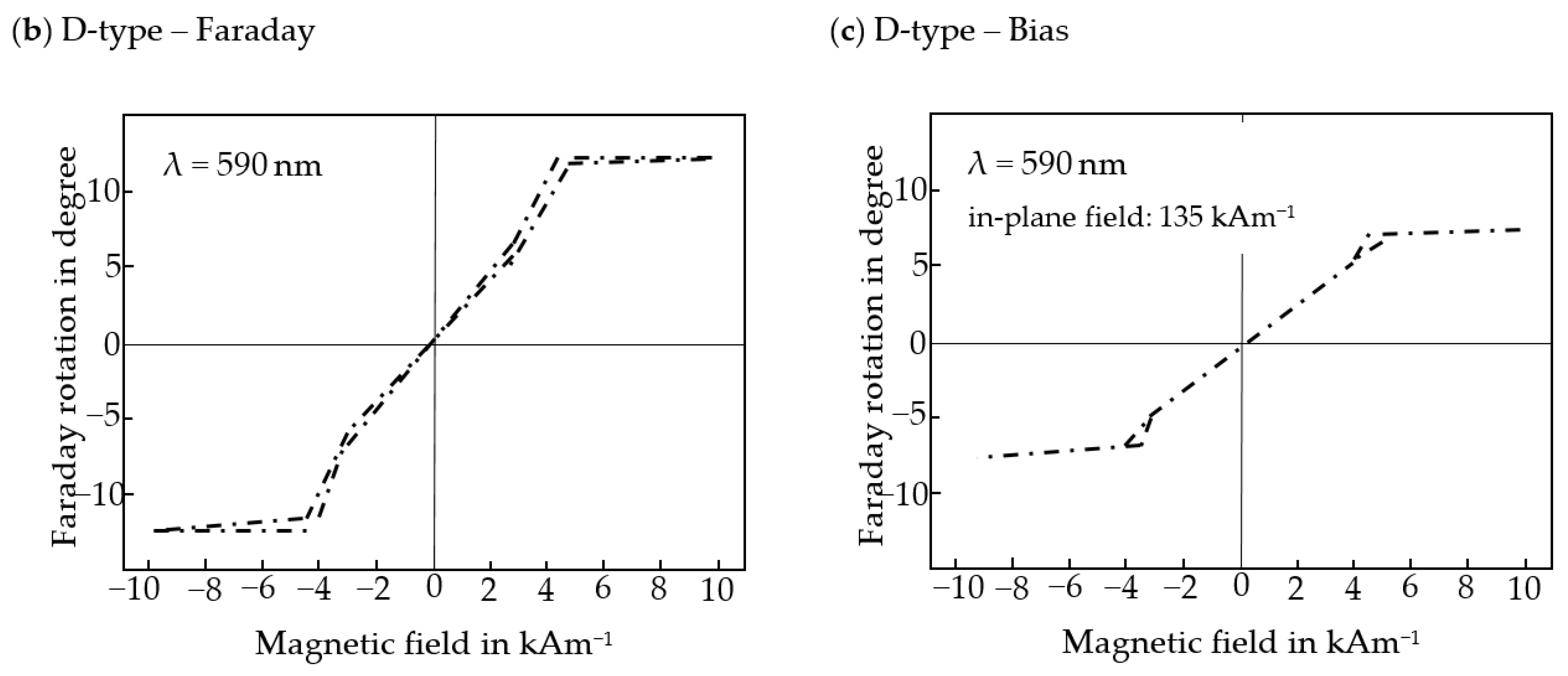
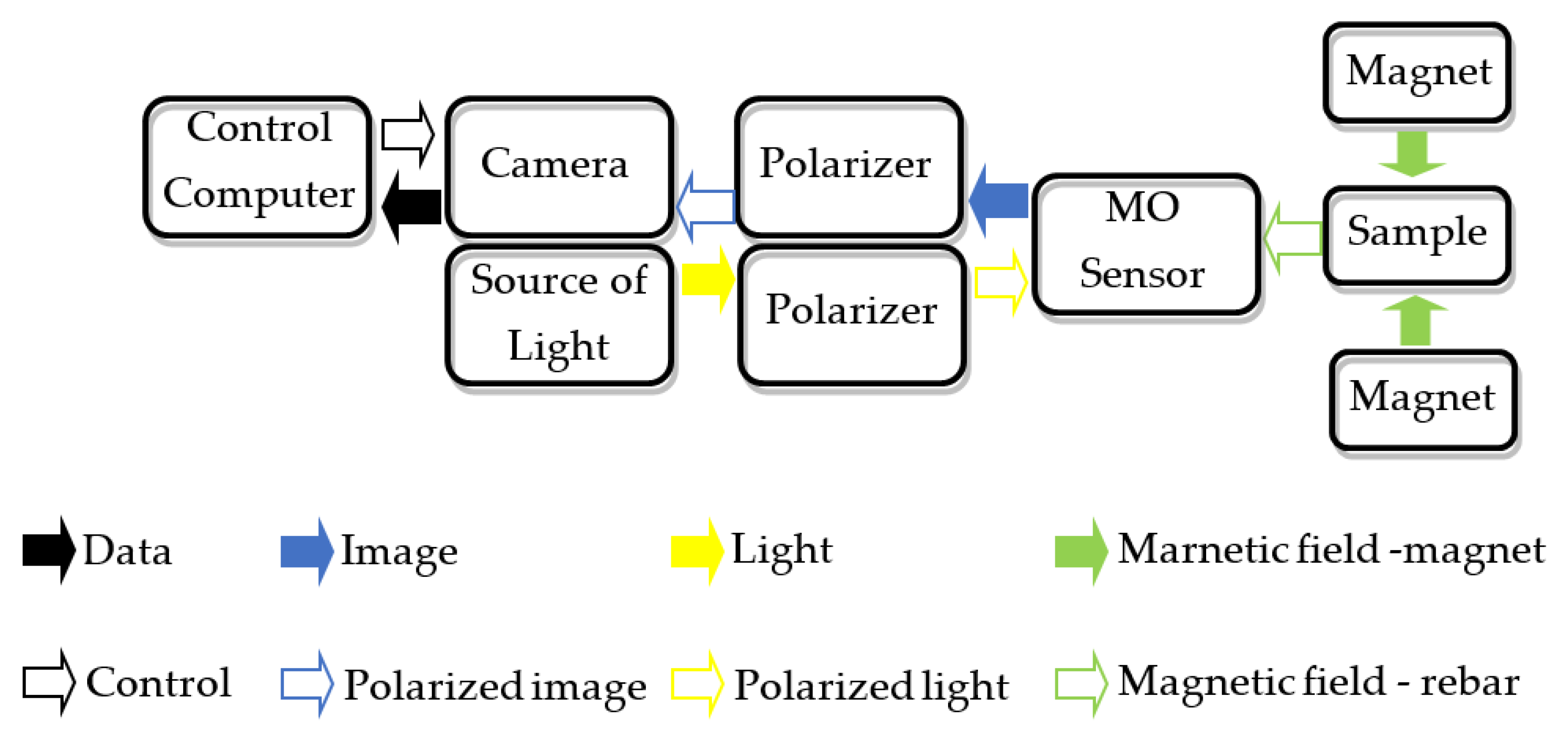


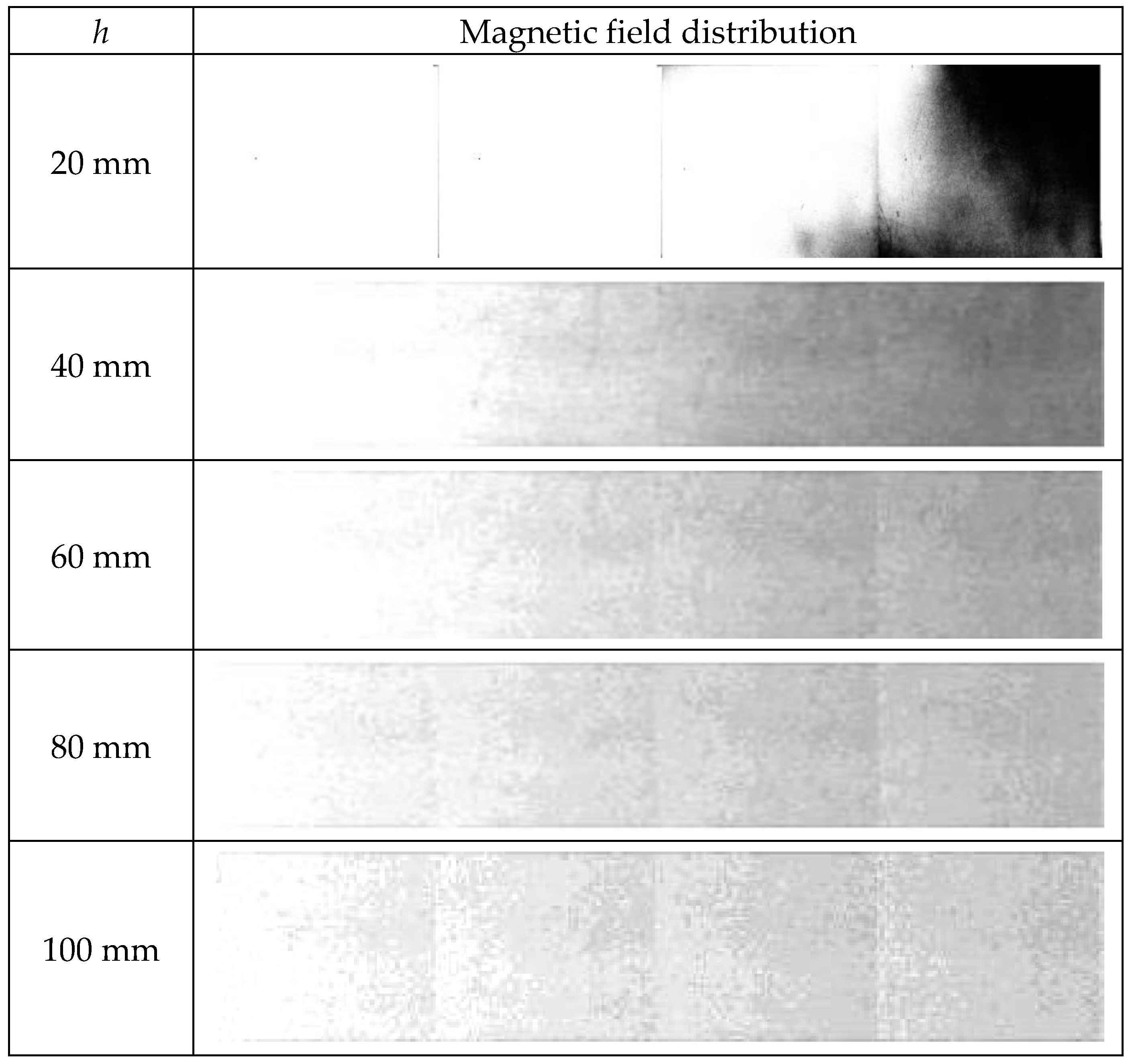
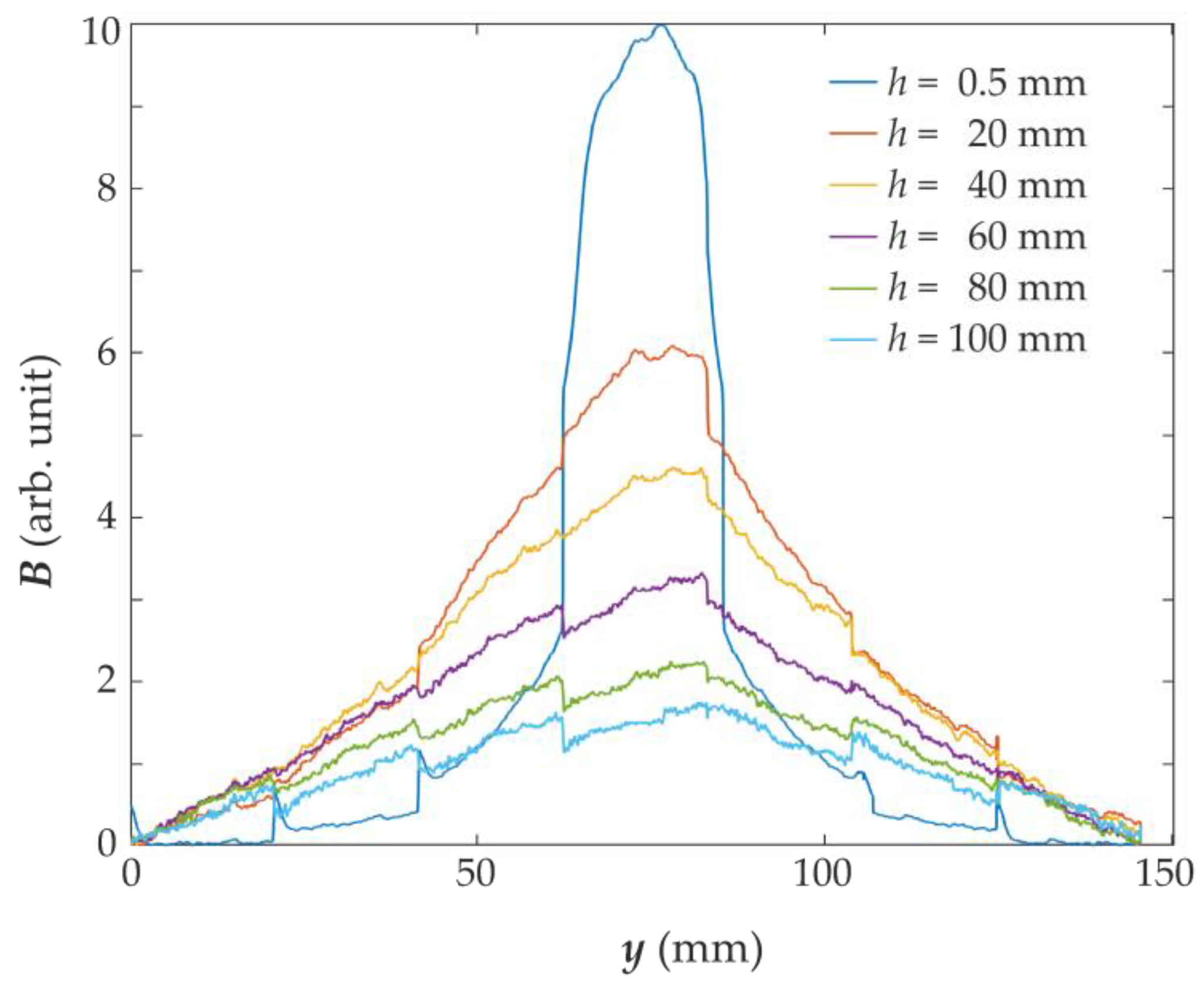
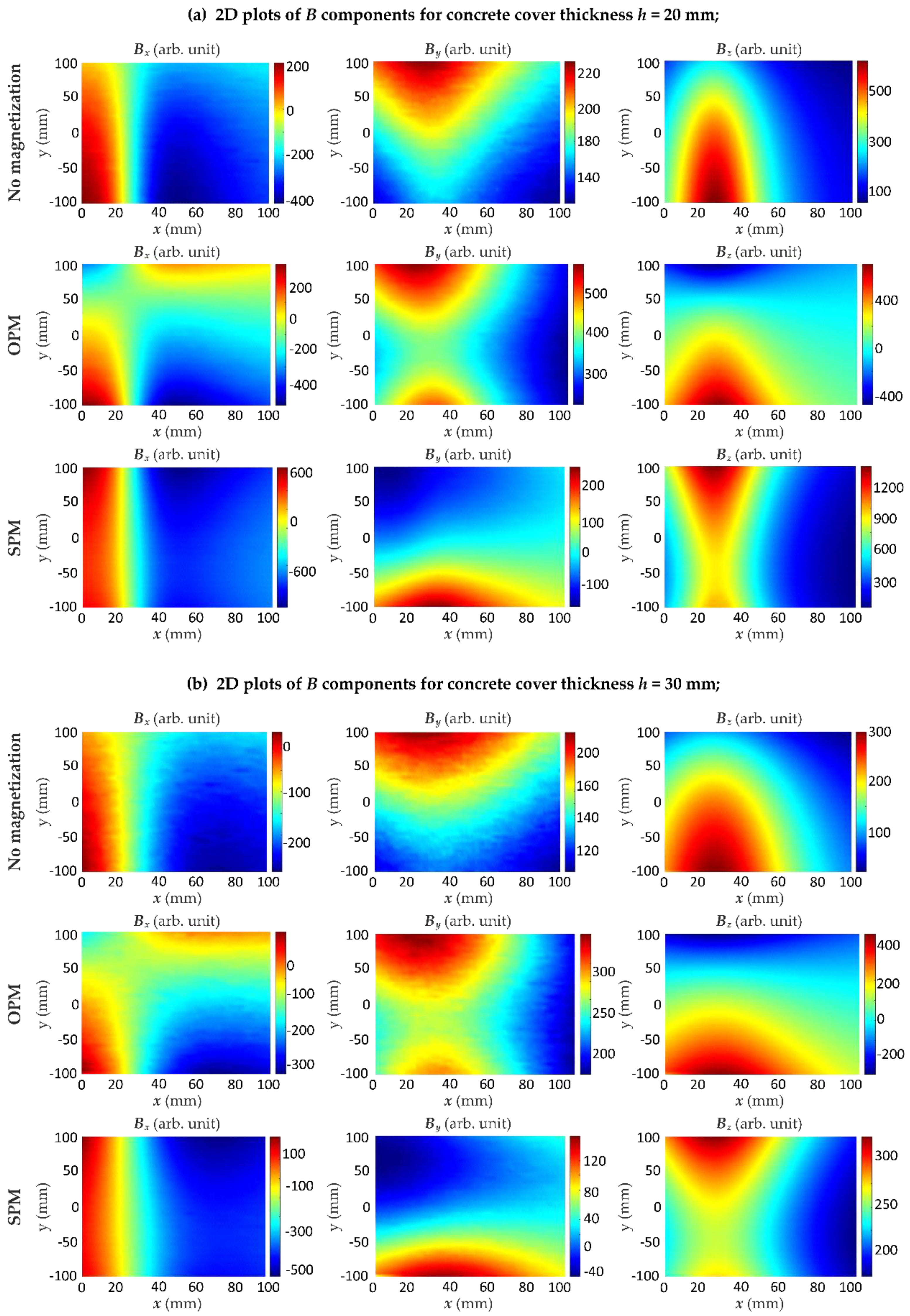
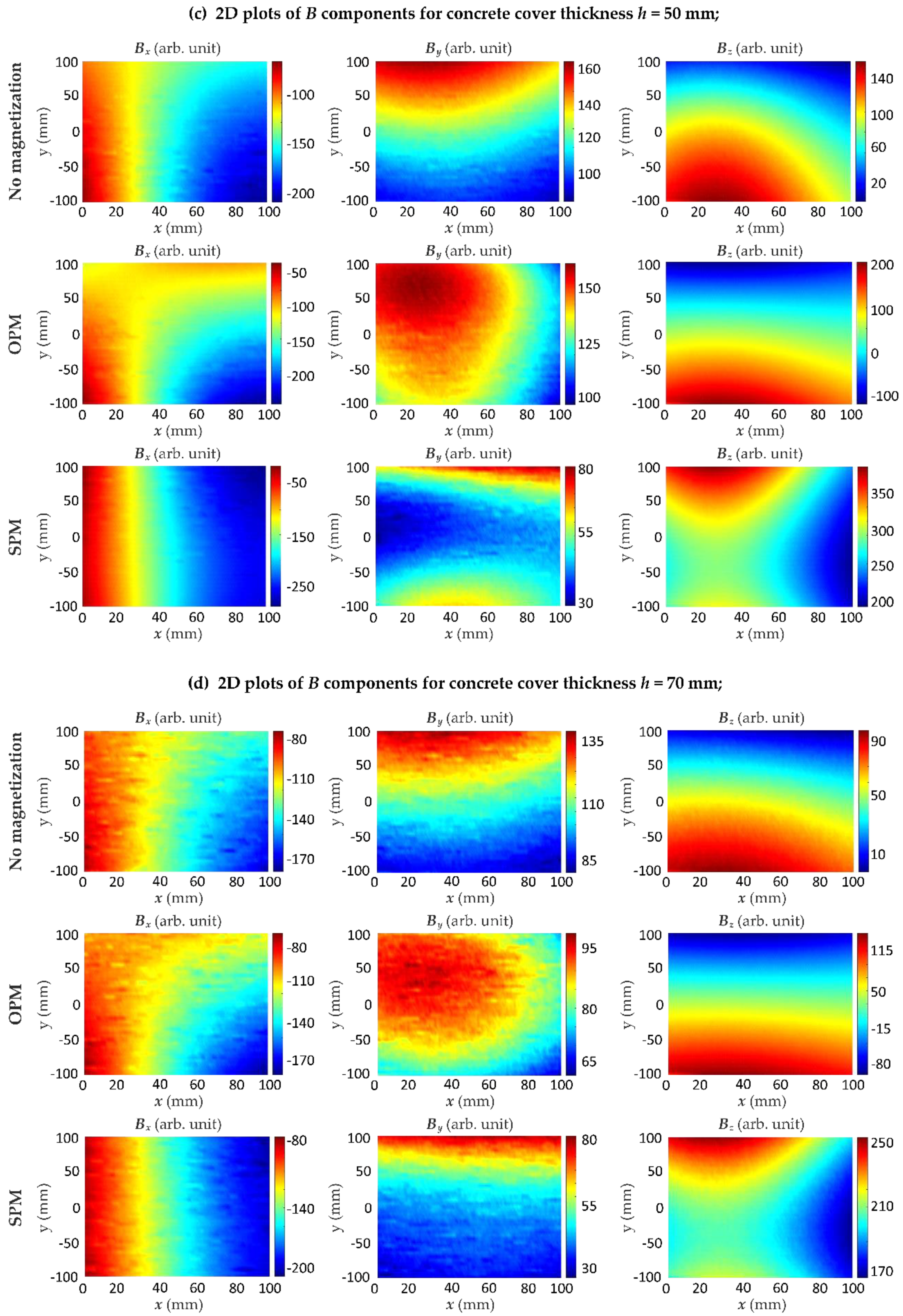
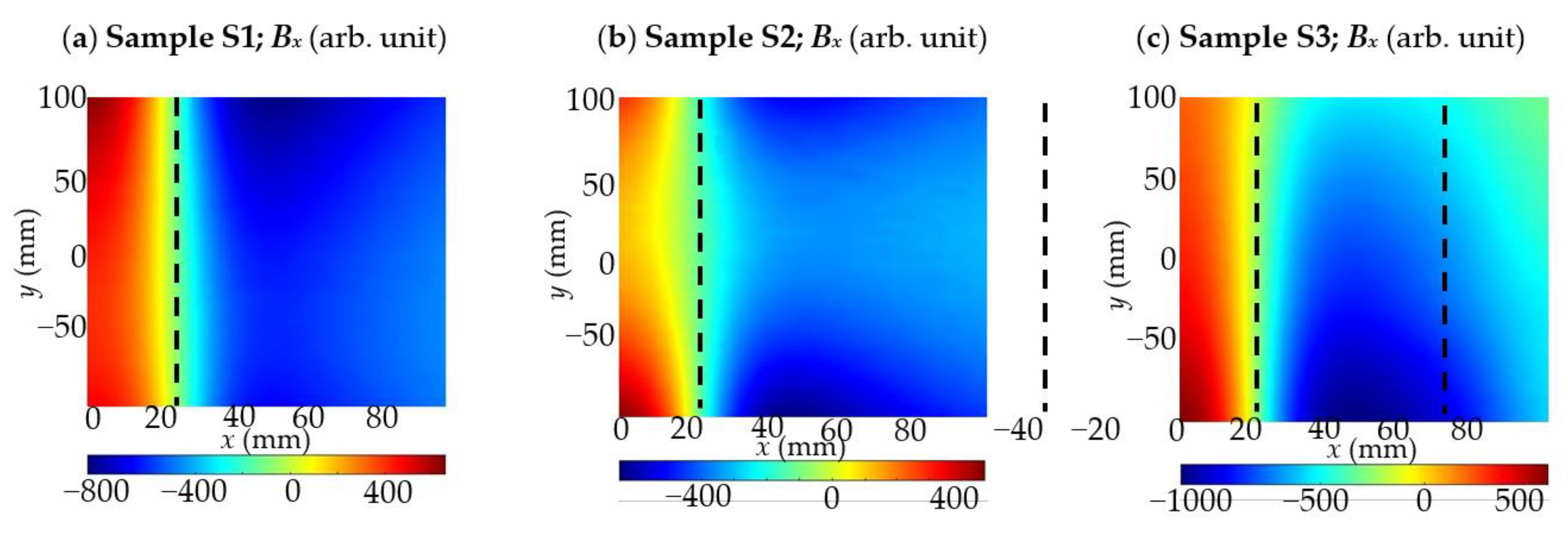




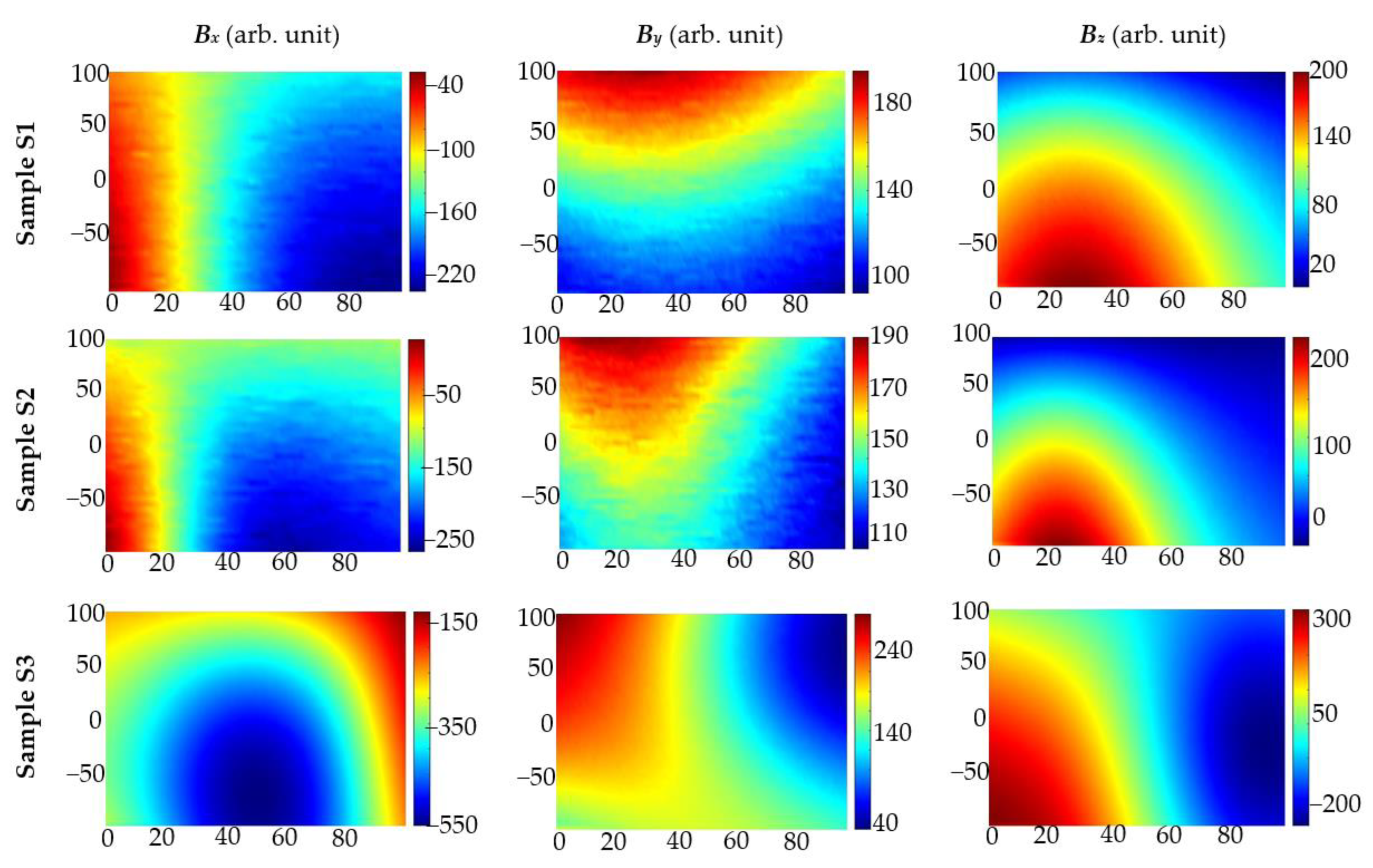

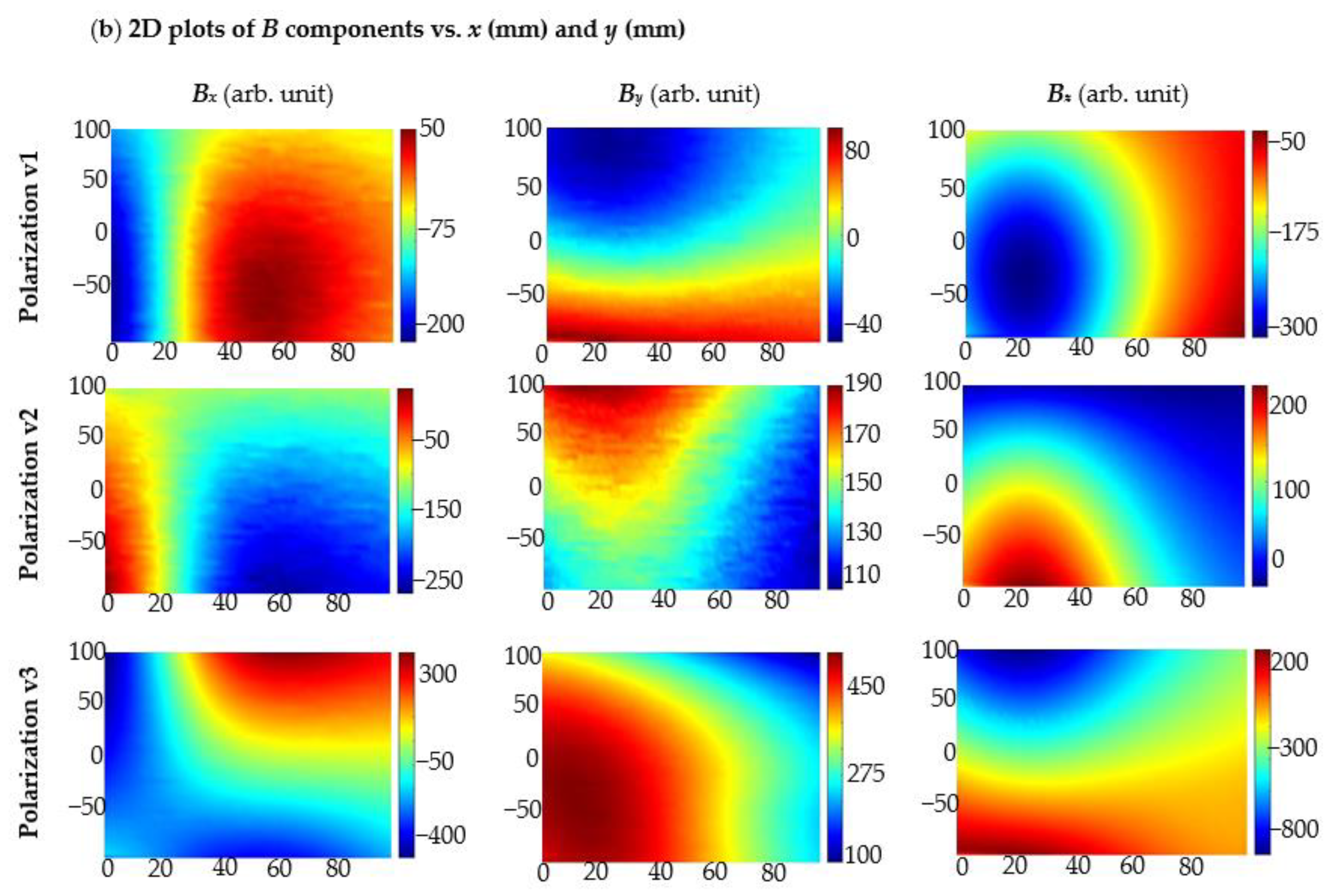
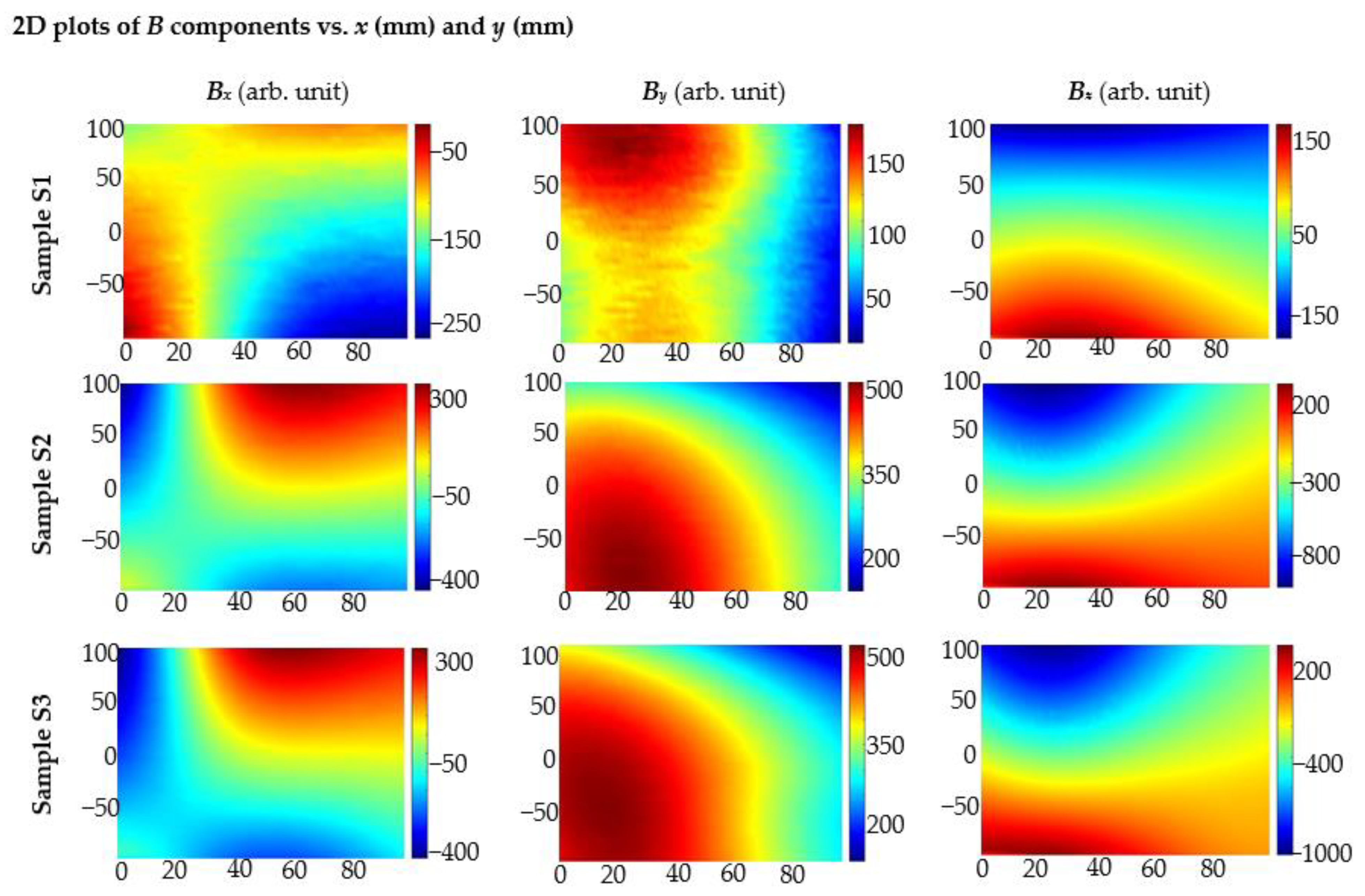
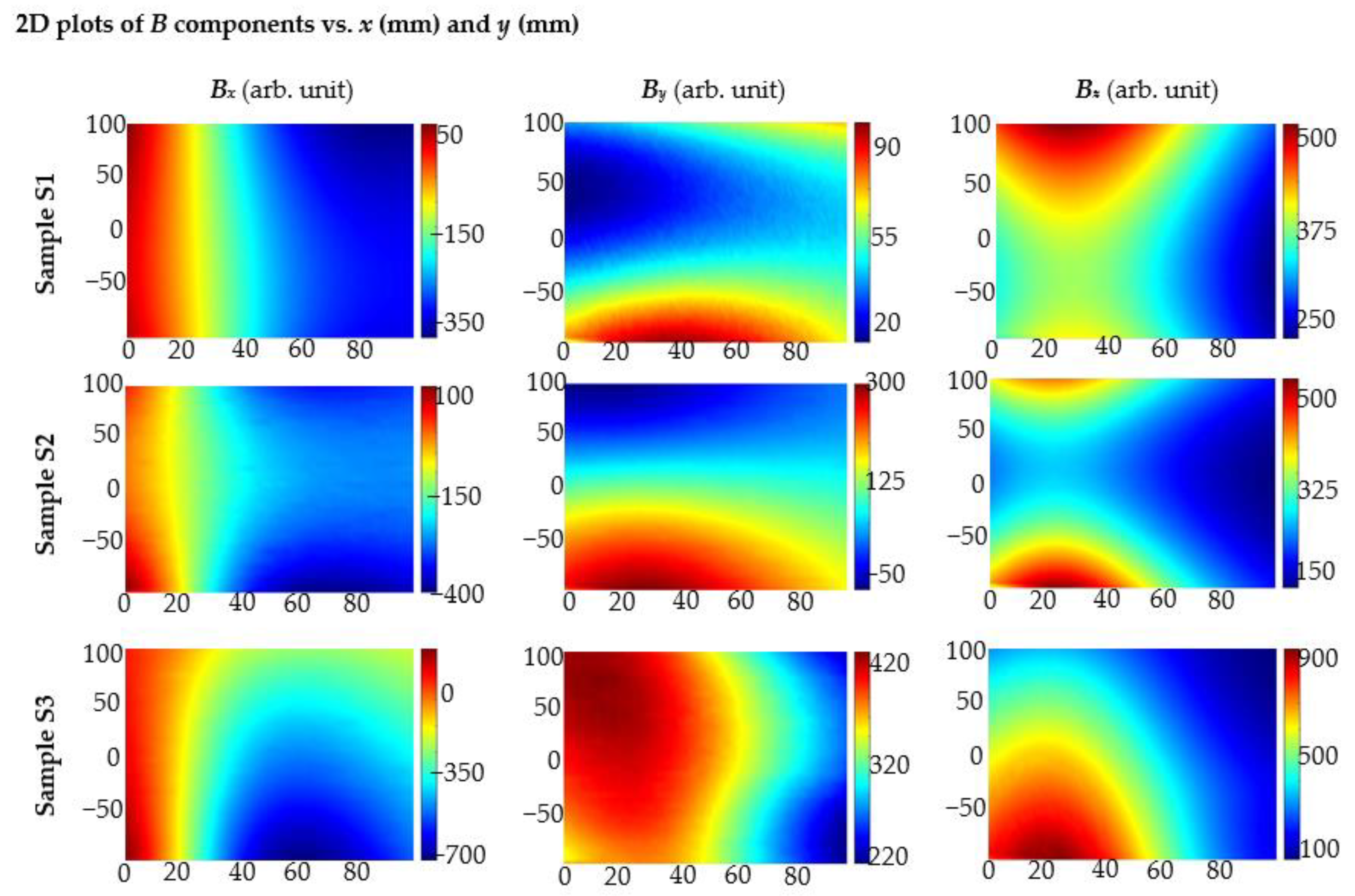
| h (mm) | 0.5 | 20 | 40 | 60 | 80 | 100 |
| SNR (dB) | 29.7 | 26.9 | 24.8 | 23.0 | 22.5 | 22.0 |
| h (mm) | 20 | 30 | 40 | 50 | 60 | 70 | |
| No mag. | Bx | 35 | 31 | 25 | 23 | 21 | 21 |
| By | 25 | X | X | X | X | X | |
| Bz | 38 | 36 | 33 | 29 | 27 | 27 | |
| SPM | Bx | 48 | 45 | 37 | 38 | 35 | 34 |
| By | 52 | 47 | 46 | 43 | 41 | 40 | |
| Bz | 58 | 56 | 56 | 55 | 56 | 53 | |
| OPM | Bx | 45 | 44 | 44 | 36 | 31 | 29 |
| By | 49 | 49 | 50 | 47 | 48 | 47 | |
| Bz | 49 | 51 | 51 | 50 | 49 | 47 | |
| h (mm) | 20 | 40 | 60 | |
| MO | 27 | 25 | 23 | |
| AMR | Bx | 48 | 37 | 35 |
| By | 52 | 46 | 41 | |
| Bz | 58 | 56 | 56 | |
Publisher’s Note: MDPI stays neutral with regard to jurisdictional claims in published maps and institutional affiliations. |
© 2022 by the authors. Licensee MDPI, Basel, Switzerland. This article is an open access article distributed under the terms and conditions of the Creative Commons Attribution (CC BY) license (https://creativecommons.org/licenses/by/4.0/).
Share and Cite
Frankowski, P.K.; Chady, T. Impact of Magnetization on the Evaluation of Reinforced Concrete Structures Using DC Magnetic Methods. Materials 2022, 15, 857. https://doi.org/10.3390/ma15030857
Frankowski PK, Chady T. Impact of Magnetization on the Evaluation of Reinforced Concrete Structures Using DC Magnetic Methods. Materials. 2022; 15(3):857. https://doi.org/10.3390/ma15030857
Chicago/Turabian StyleFrankowski, Paweł Karol, and Tomasz Chady. 2022. "Impact of Magnetization on the Evaluation of Reinforced Concrete Structures Using DC Magnetic Methods" Materials 15, no. 3: 857. https://doi.org/10.3390/ma15030857
APA StyleFrankowski, P. K., & Chady, T. (2022). Impact of Magnetization on the Evaluation of Reinforced Concrete Structures Using DC Magnetic Methods. Materials, 15(3), 857. https://doi.org/10.3390/ma15030857






